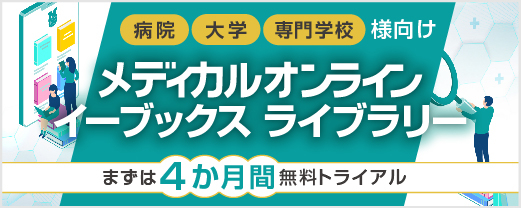アブストラクト
Japanese
| Title | Grade 1/2の先天性水腎症の経過観察はいつ終了できるか? |
|---|---|
| Subtitle | 学会賞受賞論文 |
| Authors | 中根明宏1), 松本大輔2), 安井孝周2), 加藤大貴3), 丸山哲史3), 神沢英幸4), 黒川覚史4), 西尾英紀5), 水野健太郎5), 林祐太郎5) |
| Authors (kana) | |
| Organization | 1)蒲郡市民病院 泌尿器科, 名古屋市立大学大学院医学研究科 地域医療教育研究センター, 2)名古屋市立大学大学院医学研究科腎・泌尿器科学分野, 3)名古屋市立大学大学院医学部附属東部医療センター 泌尿器科, 4)愛知県厚生農業協同組合連合会 安城更生病院 泌尿器科, 5)名古屋市立大学大学院医学研究科 小児泌尿器科学分野 |
| Journal | 日本小児泌尿器科学会雑誌 |
| Volume | 31 |
| Number | 1 |
| Page | 44-49 |
| Year/Month | 2022 / |
| Article | 報告 |
| Publisher | 日本小児泌尿器科学会 |
| Abstract | 「要旨」多くのガイドライン等で, SFU分類grade1, 2 (G1/2) の先天性水腎症に対する経過観察の仕方は定期的な超音波検査 (US) と示されているが, その期間は明示されていない. そこで我々は, 片側G1/2の先天性水腎症と診断された181例に, 定期的なUSによる水腎症のgradeの変化を後方視的に検討する研究を行った. G1は112例, G2は69例であった. G1の消失については, 12ヵ月で47.0%, 24ヵ月で66.4%, 48ヵ月で73.2%, G2の消失については, 12ヵ月で20.9%, 24ヵ月で45.9%, 48ヵ月で72.9%であり, G1はG2に比べて, 有意に短期間で水腎症が消失した. 水腎症が増悪する症例はG1の14例 (14.6%), G2の2例 (2.8%) 認めた. これら17例のうち16例が生後6ヵ月以内に増悪した. G1はG2に比べて, 有意に増悪する割合が高かった. 一方で水腎症が消失した症例に対し, その後も1年以上経過観察を継続するできた症例が42例存在した. その中で再度水腎症が出現した症例が17例 (40.5%) 存在したが, 1年以上消失したまま経過した症例では再出現しなかった. 過去の報告の結果と合わせて検討すると, G1/2の先天性水腎症は生後6ヵ月までは経過観察が必要であるが, 以後は検査の間隔を延ばすことが可能と考えられる. 水腎症が消失した後に再出現する不安定な症例に関しては今後の検討が必要である. 水腎症による症状を伝えるのに十分な年齢と考えられる生後4年が経過観察終了の目安と考えられた. |
| Practice | 臨床医学:外科系 |
| Keywords | Congenital hydronephrosis, Ultrasonography, Continuous follow-up period, 先天性水腎症, 超音波検査, 経過観察期間 |
English
| Title | THE TIMING AND TERMINATION OF FOLLOW-UP FOR CONGENITAL GRADES 1 OR 2 HYDRONEPHROSIS |
|---|---|
| Subtitle | |
| Authors | Akihiro NAKANE1)2), Daisuke MATSUMOTO3), Takahiro YASUI3), Taiki KATO4), Tetsuji MARUYAMA4), Hideyuki KAMISAWA5), Satoshi KUROKAWA5), Hidenori NISHIO6), Kentaro MIZUNO6), Yutaro HAYASHI6) |
| Authors (kana) | |
| Organization | 1)Department of Urology, Gamagori City Hospital, 2)Education and Research Center for Community Medicine, Nagoya City University Graduate School of Medical Sciences, 3)Department of Nephro-urology, Nagoya City University Graduate School of Medical Sciences, 4)Department of Urology, Nagoya City University East Medical Center, 5)Department of Urology, The Aichi Prefectural Federation of Agricultural Cooperatives for Health and Welfare Anjo Kosei Hospital, 6)Department of Pediatric Urology, Nagoya City University Graduate School of Medical Sciences |
| Journal | Japanese Journal of Pediatric Urology |
| Volume | 31 |
| Number | 1 |
| Page | 44-49 |
| Year/Month | 2022 / |
| Article | Report |
| Publisher | Japanese Society of Pediatric Urology |
| Abstract | [Abstract] Most cases of antenatal Society of Fetal Urology (SFU) grades 1 or 2 hydronephroses (HN) improve or resolve spontaneously with conservative treatment. However, the duration of follow-up for cases of grade 1 or 2 HN has no consensus. Therefore, studies are needed to determine the need for continuous follow-up periods and new management of children with antenatal grades 1 or 2 HN. We retrospectively evaluated 112 patients with post-natal grade 1 HN and 69 with grade 2 HN using abdominal ultrasonography. HN grade changes were examined on repeat ultrasonography. The mean follow-up duration was 44.9 +- 36.4 months (range 12-274). Initial SFU grade 1 HN disappeared in 47.0% of cases at 12 months, 66.4% at 24 months, and 73.2% at 48 months. Initial SFU grade 2 HN showed an improvement in grade in 74.7% of cases at 12 months, 88.3% at 24 months, and 89.5% at 48 months. However, 14.6% of SFU grade 1 and 2.8% of SFU grade 2 cases increased in grade, and of the 17 cases, 16 worsened within the first 6 months. No cases with increased grades required pyeloplasty. Initial disappearance and later reappearance of HN occurred in 40.5% of SFU grades 1 and 2 cases. No cases showed reappearance of HN after > 1 year. Ultrasonography within the first 6 months was necessary to manage children with antenatal grades 1 or 2 HN because some patients showed worsening. Spreading the follow-up interval for stable cases was considered safe. Most cases of grades 1 or 2 HN spontaneously resolved ; however, a few cases reappeared within 1 year. Therefore, ultrasonography after 1 year was necessary for children with HN that spontaneously disappeared. The appropriate time to end the follow-up was considered after 1 year or more from the disappearance confirmation. Further studies are needed on unstable cases that reappear or worsen. We concluded that 4 years or older, sufficient to convey the symptoms of HN, is appropriate for follow-up termination. |
| Practice | Clinical surgery |
| Keywords | Congenital hydronephrosis, Ultrasonography, Continuous follow-up period |
- 全文ダウンロード: 従量制、基本料金制の方共に770円(税込) です。
参考文献
- 1) White JM Jr, Kaplan GW, Brock WA : Ureteropelvic junction obstruction in children. Am Fam Physician 1984 ; 29 : 211-216.
- 2) Reddy PP, Mandell J : Prenatal Diagnosis. Therapeu-tic implications. Urol Clin North Am 1998 ; 25 : 171-180.
- 3) Beseghi U, Chiossi C, Bonacini G, et al : Ultrasound screening of urinary malformations in 'normal' new-borns. Eur Urol 1996 ; 30 : 108-111.
- 4) Fernbach SK, Maizels M, Conway JJ : Ultrasound grad-ing of hydronephrosis : introducetion to the system used by the Society for Fetal Urology. Pediatr Radiol 1993 ; 23 : 478-480.
- 5) Madden NP, Thomas DFM, Gordon AC, et al : Ante-natally detected pelviureteric junction obstruction. Is non-operation safe? Br J Urol 1991 ; 68 : 305-310.
残りの19件を表示する
- 6) Koff SA, Campbell KD : The nonoperative management of unilateral neonatal hydronephrosis : Natural history of poorly functioning kidneys. J Urol 1994 ; 152 : 593-595.
- 7) Nguyen HT, Herndon CDA, Cooper C, et al : The soci-ety for Fetal Urology consensus statement on the evalu-ation and management of antenatal hydronephrosis. J Pediatr Urol 2010 ; 6 : 212-231.
- 8) 河野 美幸, 小川 哲司, 小島 祥敬, 他 : 小児先天性水腎症(腎盂尿管移行部通過障害)診療手引き2016. 日小泌会誌 2016 ; 25 : 76-121.
- 9) Madden-Fuentes RJ, McNamara ER, Nseyo U, et al : Resolution rate of isolated low-grade hydronephrosis diagnosed within the first year of life. J Pediatr Urol 2014 ; 10 : 639-644.
- 10) Sidhu G, Beyene J, Rosenblum ND : Outcome of iso-lated antenatal hydronephrosis : a systematic review and meta-analysis. Pediatr Nephrol 2006 ; 21 : 218-224.
- 11) Kohata E, Kimata T, Onuma C, et al : Natural course of isolated mild congenital hydronephrosis : A 2-year prospective study at a single center in Japan. Int J Urol 2019 ; 26 : 643-647.
- 12) Rodriguez LV, Lock J, Kennedy WA, et al : Evaluation of sonographic renal parenchymal area in the man-agement of hydronephrosis. J Urol 2001 ; 165 : 548-551.
- 13) Karnak I, Woo LL, Shah SN, et al : Results of a practi-cal protocol for management of prenatally detected hydronephrosis due to ureteropelvic junction obstruc-tion. Pediatr Surg Int 2009 ; 25 : 61-67.
- 14) Vemulakonda V, Yiee J, Wilcox DT : Prenatal hydroneph-rosis : Postnatal evaluation and management. Curr Urol Rep 2014 ; 15 : 430.
- 15) Rigas A, Karamanolakis D, Bogdanos I, et al : Pelvi-ureteric junction obstruction by crossing renal ves-sels : clinical and imaging features. BJU Int 2003 ; 92 : 101-103.
- 16) Capoliccho JP, Braga LH, Szymanski KM : Canadian Urological Association/Pediatric Urologists of Canada guideline on the investigation and management of an-tenatally detected hydronephrosis. Can Urol Assoc J 2018 ; 12 : 85-92.
- 17) Nakane A, Mizuno K, Kato T, et al : Appropriate tim-ing of performing abdominal ultrasonography and ter-mination of follow-up observation for antenatal grade 1 or 2 hydronephrosis. BMC Urol 2020 ; 20 : 178.
- 18) Peters CA, Skoog SJ, Arant JBS, et al : Summary of the AUA guideline on management of primary vesi-coureteral reflux in children. J Urol 2012 ; 62 : 534-542.
- 19) Zee RS, Herndon CDS, Cooper CS, et al : Time to reso-lution : a prospective evaluation from the Society for Fetal Urology hydronephrosis registry. J Pediatr Urol 2017 ; 13 : 316, e1-5.
- 20) Ericson BA, Maizels M, Shore RM, et al : Newborn so-ciety of fetal urology grade 3 hydronephrosis is eguiva-lent to preserved percentage differential function. J Pediatr Urol 2007 ; 3 : 382-386.
- 21) Matui F, Shimada K, Matumoto F, et al : Late recur-rence of symptomatic hydronephrosis in patients with prenatally detected hydronephrosis and spontaneous improvement. J Urol 2008 ; 180 : 322-325.
- 22) Chertin B, Pollack A, Koulikov D, et al : Conservative treatment of ureteropelvic junction obstruction in children with antematal diagnosis of hydronephrosis : lessons learned after 16 years of follow-up. Eur Urol 2006 ; 49 : 734-738.
- 23) Akhavan A, Schnorhavorian M, Garrison LP, et al : Resource utilization and costs associated with the di-agnostic evaluation of nonrefluxing primary hydroneph-rosis. J Urol 2014 ; 92 : 919-924.
- 24) Gantti JM, Broecker BH, Scherz HC, et al : Antenatal hydronephrosis with postnatal resolution : how long are postnatal studies warranted? Urology 2005 ; 57 : 1178i-iii.


